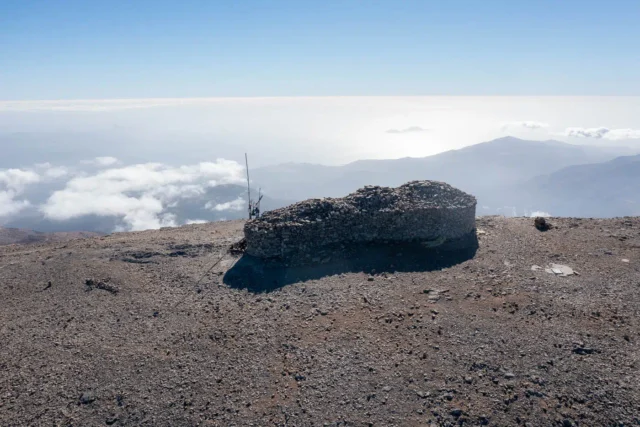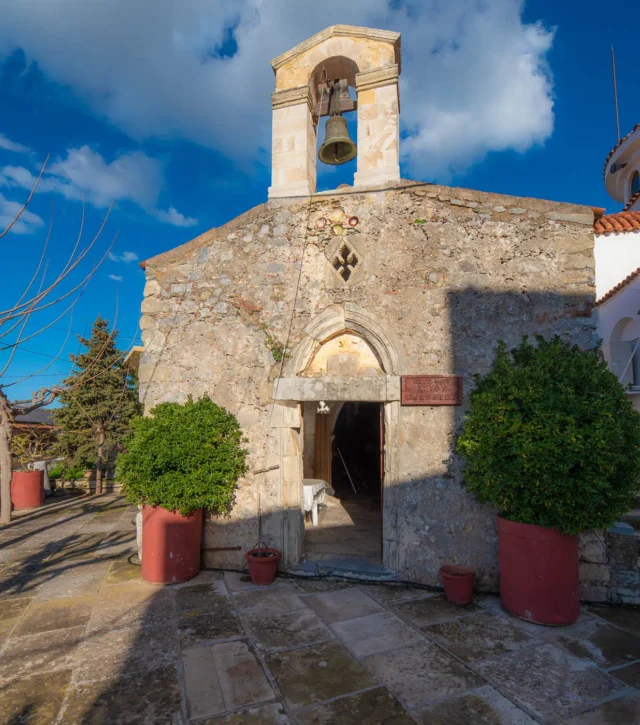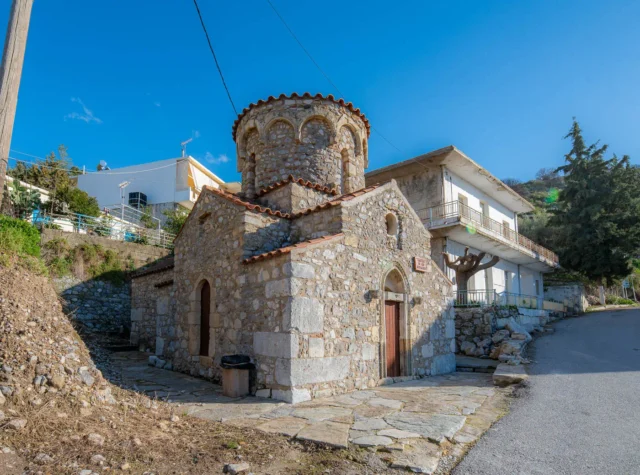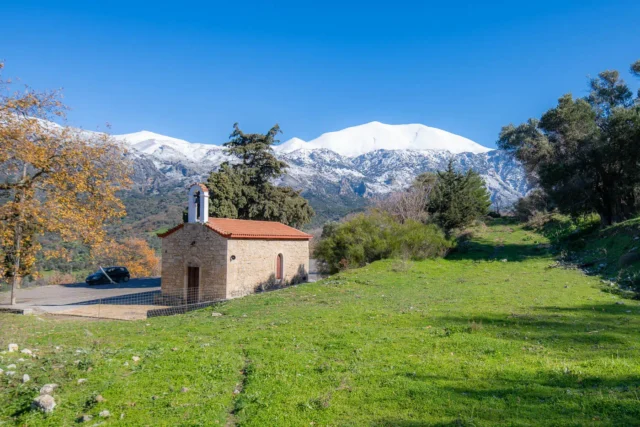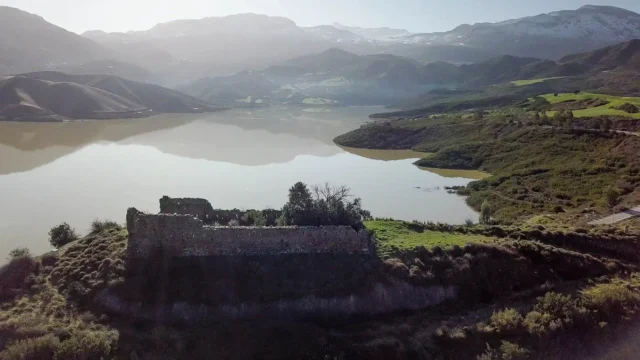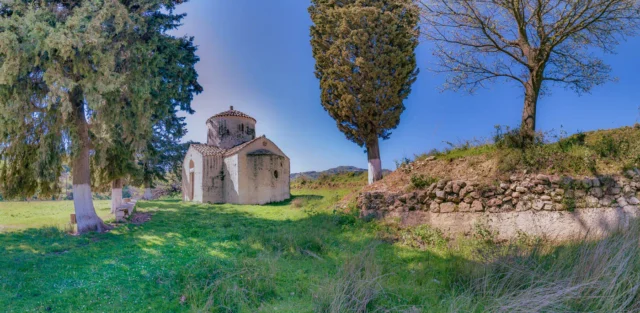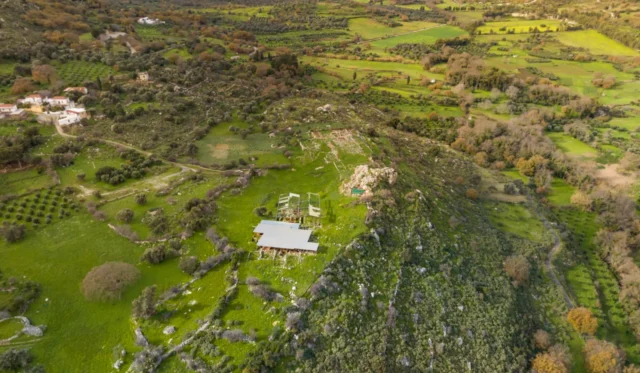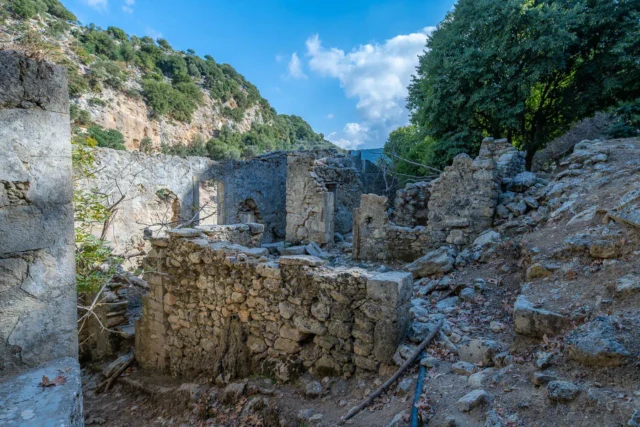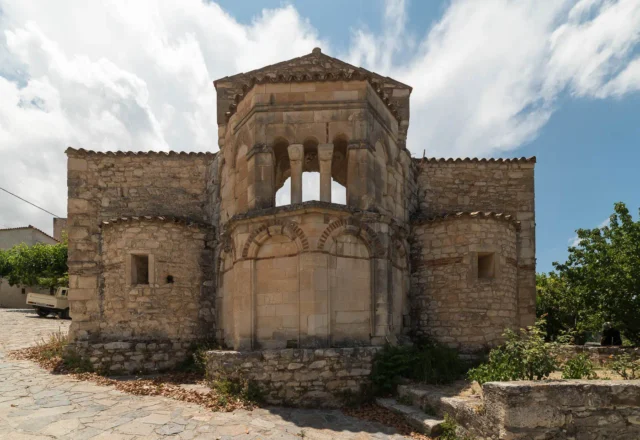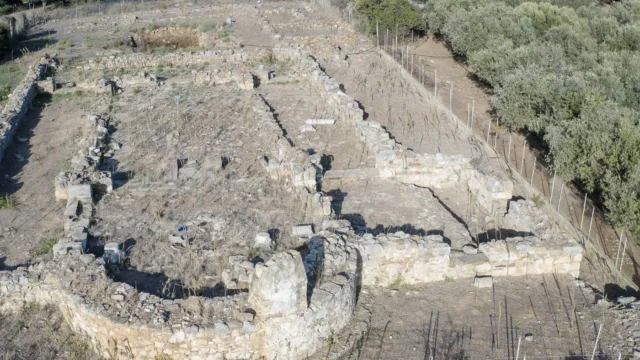227
listings found
Categories
Active filters:
Timios Stavros peak, Psiloritis mountain
At 2456 meters, Timios Stavros is the highest summit of Crete's Psiloritis mountain range, offering 360-degree views of the island, Aegean, and Libyan Seas. It is accessible via the E4 path from Nida Plateau or the stone-paved "Strata tou Psiloriti" trail. The peak features a dry-stone chapel. The range includes other notable peaks such as Agathias, the second-highest; the pyramidal Stolistra; and Skinakas, which is the site of a well known observatory.
Margarites tholos tomb
Late Minoan Tholos Tomb at Margarites, Mylopotamos During the winter of 1996-1997, a significant Late Minoan III period tholos tomb was excavated on the property of M. Papadakis, in the […]
Panagia Mavridiani in Meronas
Panagia Mavridiani, or Church of the Nativity of Mary, stands near Meronas, Crete, with origins in the 13th century, expanded in the 15th and 16th. The church features two aisles; the older, 13th-century section displays Byzantine architecture with a domed, single-nave design and 13th-century fresco remnants. The northern aisle, dedicated to Saints Constantine and Helen, was added in the 16th century. Frescoes, though partially lost, portray scenes like the Nativity of Mary, Annunciation, Ascension, and Second Coming, alongside saints such as Gregory, Romanos, and Panteleimon. Restored in 2012, it is a testament to Byzantine artistic and religious heritage.
Meronas
Meronas, in Rethymno's Amari valley, features a rich history from antiquity to Ottoman rule. Notable are Byzantine churches with 14th-16th century frescoes, a Venetian-era tower, and the 19th-century Koules. The village's cultural association preserves traditions with events like Carnival, Easter celebrations, and music schools. Historical records date to 1301, with population fluctuations noted from the 16th to 21st centuries. The village includes the churches of Assumption of the Virgin Mary, Panagia Mavridiani, and Saint Panteleimon, showcasing varied architectural and artistic periods.
Moni Asomaton monastery
Located in the Amari Valley, 35 km from Rethymno, this monastery is dedicated to the Synaxis of the Archangels. The katholikon (main church) represents a unique Franco-Byzantine style. Originally a 14th-century barrel-vaulted church built on 10th-century foundations destroyed in the 1303 earthquake, it was later transformed into a cross-in-square church. Historically, it was linked to the Varouchas family, served as the seat of the Bishop of Lampe, and became an agricultural school in 1927. After nearly a century, it officially reopened in May 2024.
Panokastri, the Koules of Mylopotamos
Explore the ruins of the Koules of Mylopotamos, a 14th-century Venetian fortress in Crete, and discover the history of the Kallergis family's rebellion.
Koules of Potamoi Dam
Located on a hill west of the Potamoi Dam reservoir in the Amari Valley, Rethymno, this is one of many small Ottoman forts built between 1866 and 1869. This koules was part of a fortification network designed to control the Cretan hinterland, specifically the crucial passage leading to the Messara Plain. The area was known for the Ambadiotes, requiring Ottoman military presence. The rectangular fort (25m x 8m) is a designated preserved monument, with partially preserved exterior walls overlooking the reservoir.
Agios Nikolaos, and Transfiguration of Christ churches in Elenes
In the Amari Valley of Crete, the village of Elenes features the Church of Agios Nikolaos, a dual-aisled Byzantine structure dedicated to St. Nicholas and St. Anne. The church is significant for its extensive cycle of 13th-century frescoes, which portray scenes from the life of Christ and other saints in a style marked by expressive figures and rich colors. Nearby are the ruins of another Byzantine church, dedicated to the Transfiguration of Christ, which also retains fragments of its frescoes.
Koules in Meronas
The Koules of Meronas, also known as the Koules of Apostoli, is a significant 19th-century Ottoman fortification in Crete. Constructed between 1866-1869 at the strategic entrance of the Amari Valley and the exit of the Potamon Valley, its purpose was to monitor and suppress Cretan rebels. The structure was a large, central Koules (Kisla), composed of two buildings with bastions, serving as a military headquarters during the Cretan Revolution of 1866-1869. Though partially ruined, substantial portions of its walls remain.
Agia Paraskevi in Kalogerou
Agia Paraskevi, near Kalogerou in Amari, Crete, is a 16th-century Venetian-era church with a free cross floor plan and a dome on a cylindrical drum. Reconstructed in 1888, it retains original Venetian frescoes, notably in an arcosolium depicting Christ and kneeling figures, including a Georgios Chortatzis. The church's architecture and frescoes, along with the Chortatzis burial, highlight Venetian influence in Crete. The identity of Georgios Chortatzis, possibly linked to archons or a playwright, remains debated. The church is active and open to visitors.
Monastiraki Minoan Palace
Situated in Crete's Amari Valley, a strategic corridor, this site was a significant Minoan Protopalatial administrative center (c. 2100-1700 BC). Covering over 300,000 square meters, it includes large-scale buildings, vast storage areas, workshops, and multiple sealings archives that reveal its economic power. Artifacts, including sealings, show a deep integration into the broader Minoan trade network, with notable connections to the palace at Phaistos.
Panagia in Patsos
Located in Patsos, Amari, this ruined 14th-century church is a significant Byzantine monument in Rethymno. Its unique cross-in-square architecture blends Byzantine and Western elements, a style uncommon for the Cretan countryside. The interior was adorned with high-quality frescoes, considered fine examples of late Byzantine art, depicting the Virgin Mary, Saint Nicholas, and the Communion of the Apostles. Though damaged by an earthquake, its surviving elements attest to the cultural flourishing of Crete during this period.
Mouses abandoned village
Mouses, an abandoned village near Mourtzana in Rethymno, Crete, reflects the island's rural past. The village's history likely mirrored other Cretan settlements, with population fluctuations due to historical events and economic shifts. Abandoned watermills highlight Mouses's role as a center for milling grain in the pre-industrial era, crucial for producing flour and other grain-based products. The village's current state reflects the rural depopulation seen in Crete during the 20th century. Mouses stands as a testament to the passage of time, with its abandoned watermills offering a glimpse into traditional practices. Although no longer inhabited, Mouses retains historical significance, providing a resource for understanding Crete's rural past.
Agios Ioannis in Episkopi of Rethymno
Explore the ruins of the Agios Ioannis in Episkopi of Reethymno in Crete, a testament to the island's rich religious and historical heritage.










